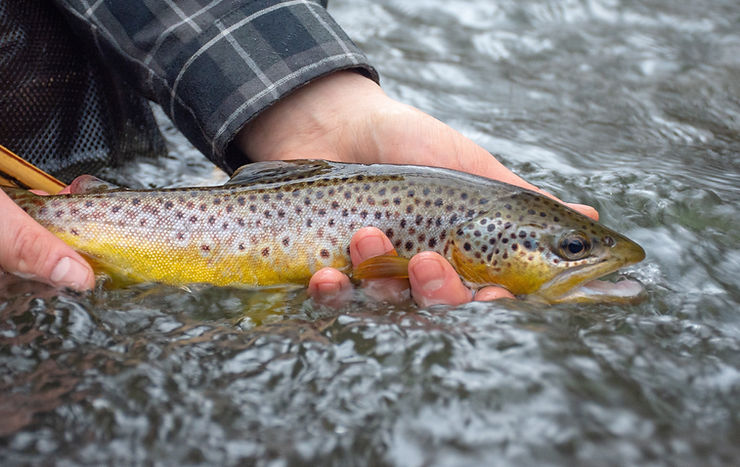Upper West Branch Susquehanna River

As evening settled in, the stream’s smooth surface became dotted with the rings of feeding trout. Seemingly gnat-sized mayflies fluttered in the air, one even landing on the back of my hand. It wasn’t like anything I’d ever seen, with a white body, brownish thorax, and tiny, cellophane-like wings. The closest I came to matching it was with a size 20 Light Cahill, but it wasn’t a Cahill. The trout knew it wasn’t a match, too, and several came up to inspect from below only to deem it inedible.
I didn’t know it then, but that evening I encounter my first hatch of Angler’s Curse. Although Angler’s Curse has nothing to do with the occult, sometimes it can feel like it. These mayflies (genus Caenis) are small, ranging in size from 22 to 28, and when trout decide to key on them, it can be a humbling experience. That’s the nature of fly fishing, of course, and the Angler’s Curse is just one of the unique experiences that West Branch Susquehanna River has to offer.
If you’re like most people, the mention of West Branch Susquehanna River summons images of a wide, sprawling river that empties into the main branch Susquehanna River in the eastern part of the state. But upriver – way upriver – above the Curwensville Dam, it’s a different story. This is where West Branch Susquehanna River originates and wild brown trout rule.
Historically, Cambria County represents the heart of Pennsylvania’s coal mining heritage. Commercially-operated mines opened here in the 1840s, with large-scale mining beginning in 1856. According to the Johnstown Area Historical Society, there were 130 significant coal mines in the county by 1901, and those mines produced 16 million tons of coal annually throughout the 1910s and 1920s. Only after the Great Depression did those numbers decline, and it wasn’t until the 1980s that coal mining ceased to play an important role in the county’s economy.
Decades of mining at that level of intensity severely impaired the watershed, and it took three events to turn it around. First, many of the small towns dotting the river’s course built treatment facilities for their raw sewage. Second, the removal of the 18-acre Barnes-Watkins Refuse Pile, which contained 1.3 million tons of coal refuse and was located on the banks of, and in some places directly in, West Branch. And third, an Acid Mine Drainage (AMD) treatment facility was installed on Barnes and Tucker’s Lancashire 15 mine, which closed in 1969.
Prior to the AMD treatment facility, the inactive mine discharged almost 15 million gallons of water laced with iron pyrite and other mining chemicals directly into the river every day. Today, the facility captures the water that naturally rises from within the mine, neutralizes the chemicals, and then pumps it into the river. Since the water originates several hundred feet below the earth’s surface, its temperature when it leaves the mine is in the low-50s Fahrenheit, creating a fishery that can support trout year-round.
Over the past decade, water quality has drastically improved. In fact, the first 8 miles or so, from the plant down to the beginning of the flood control section in the town of Cherry Tree are classified as Class A Wild Trout Stream. In 2018, this section, combined with an additional 18 miles of river down to Dowler Junction, began to be managed under Catch and Release All Tackle regulations, and receives no trout stockings by the PA Fish and Boat Commission (PFBC).
_______________________________
— This is an excerpt from my book “Fly Fishing in the Heart of PA’s Coal Country: Upper West Branch Susquehanna River and Chest Creek.”
Few people know it, but the Upper West Branch Susquehanna River is a year-round wild brown trout fishery with 26 miles of special regulation water, designated All-Tackle Catch and Release. This book provides information about hatches and what to expect when you get there. The Upper West Branch is such a new, emerging fishery that this book is perhaps the first, and so far only, work that deals exclusively with the trout fishing in this area. I hope you’ll check it out.


Thanks for the info on this lesser known water.